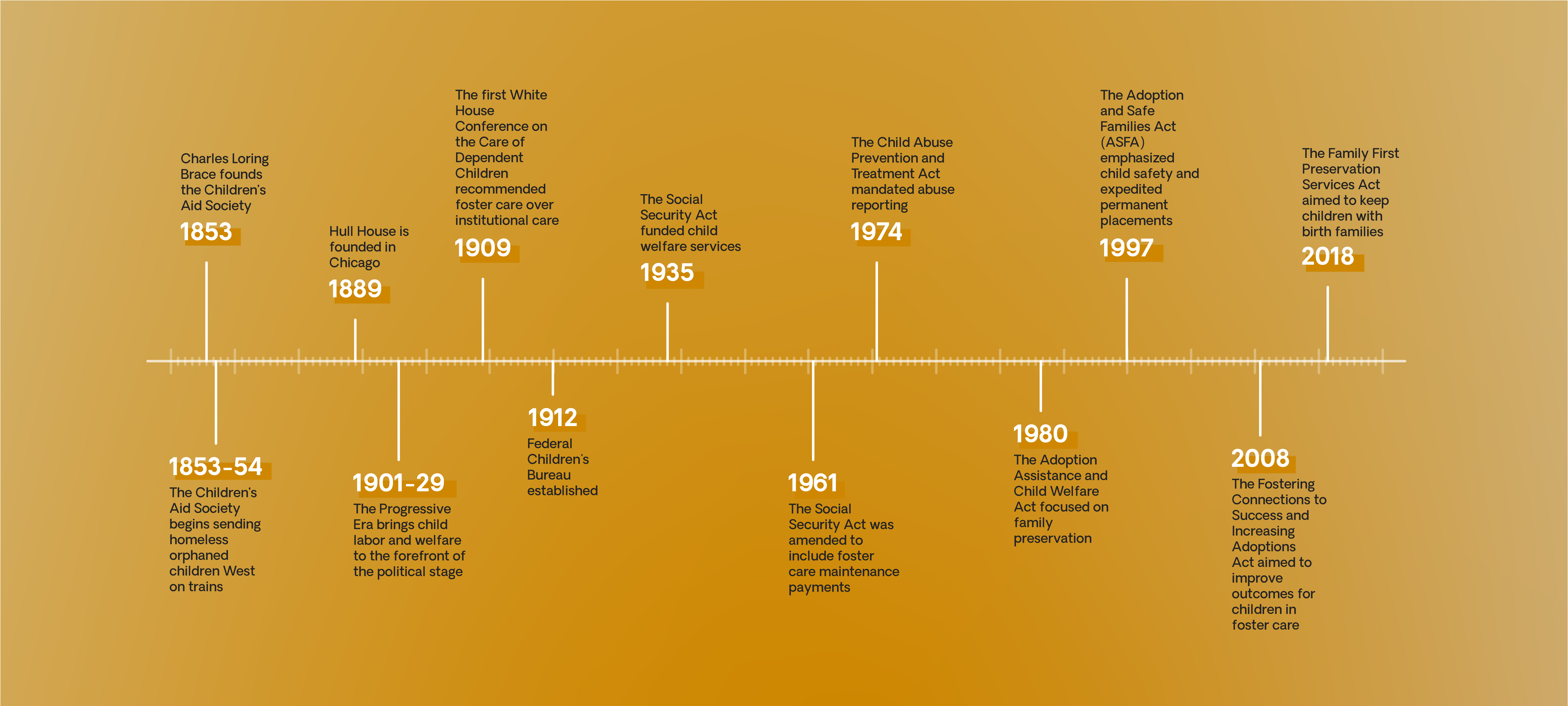A History of Foster Care in the United States
From the 1800s to today, the care for children without families in America shifted from orphanages to foster care. We owe many amazing individuals our thanks for their passion for the well-being of our nation’s children. Yet despite significant advances, the foster care system faces several challenges. A significant number of children still enter foster care for preventable reasons and suffer unnecessary trauma due to ongoing societal and systemic issues.
We look back at the history of foster care in the United States to understand the full context of today’s child welfare system and what we can do to create positive change.
The New York Children’s Aid Society
The beginnings of foster care in the United States came in the mid-1800s with the New York Children’s Aid Society. Charles Loring Brace saw alarming numbers of orphans sleeping on the city streets and felt compelled to act. In response, he developed a solution: the “placing out system.” Children were shipped west on railroads, or “orphan trains”, and picked up by what were essentially foster families. However, these foster families underwent no scrutiny and did not need to meet any qualifications.
While some of the children in the placing out system did end up in loving homes, others were no more than indentured servants. The well-intended placing out system focused too much on finding homes for children and not enough on ensuring their lasting welfare.
Jane Addams: Hull House and Child Welfare
In the late 1800s and early 1900s, many leaders of the Progressive Era brought the concept of child welfare to the forefront, particularly women. Jane Addams, a prolific and influential author and speaker, worked with Ellen Gates Starr to found the famous Chicago settlement house, Hull House. Hull House “provided kindergarten and daycare facilities for the children of working mothers; an employment bureau; an art gallery; libraries; English and citizenship classes; and theater, music, and art classes.”
The example set by Hull House propelled social growth and helped draw attention to the importance of child welfare. Their efforts were instrumental in creating protective legislation like child labor laws, as well as the formation of the Federal Children’s Bureau.
The Federal Children’s Bureau
The United States government established the Children’s Bureau in 1912, with Julia Lathrop appointed as chief. The first female bureau chief in the federal government, she worked to focus policy and action on home life and stability for children. Grace Abbott, her successor, became another instrumental leader of child welfare reform. Through their work, the Children’s Bureau centered foster care on the health and well-being of the children. This paved the way for modern foster care and highlighted the importance of permanency.
A Century of Reforms
Like every organization, the Children’s Bureau wasn’t perfect. As research, resources, and child psychology became more accessible, the child welfare system adapted. Several reforms over the course of the century refined standards and practices. Our current foster care system is a result of over 100 years of advocacy and fine-tuning. The timeline below indicates some of the key milestones and major changes.
Timeline of the History of Foster Care

Foster Care Today
Foster care has come a long way since its beginning nearly 200 years ago. Ordinary people saw a need and stepped up to help. Their passion and hard work created the framework to help care for America’s vulnerable children. However, the system has its problems. Our nation faces an ongoing child welfare crisis, and many people are starting to recognize it.
That’s why For Others works to address the crisis plaguing our nation’s most vulnerable. All our kids and teens deserve a childhood filled with love, stability, and support. Join us in the fight to solve the child welfare crisis in our lifetime. Donate today to help restore lives!
